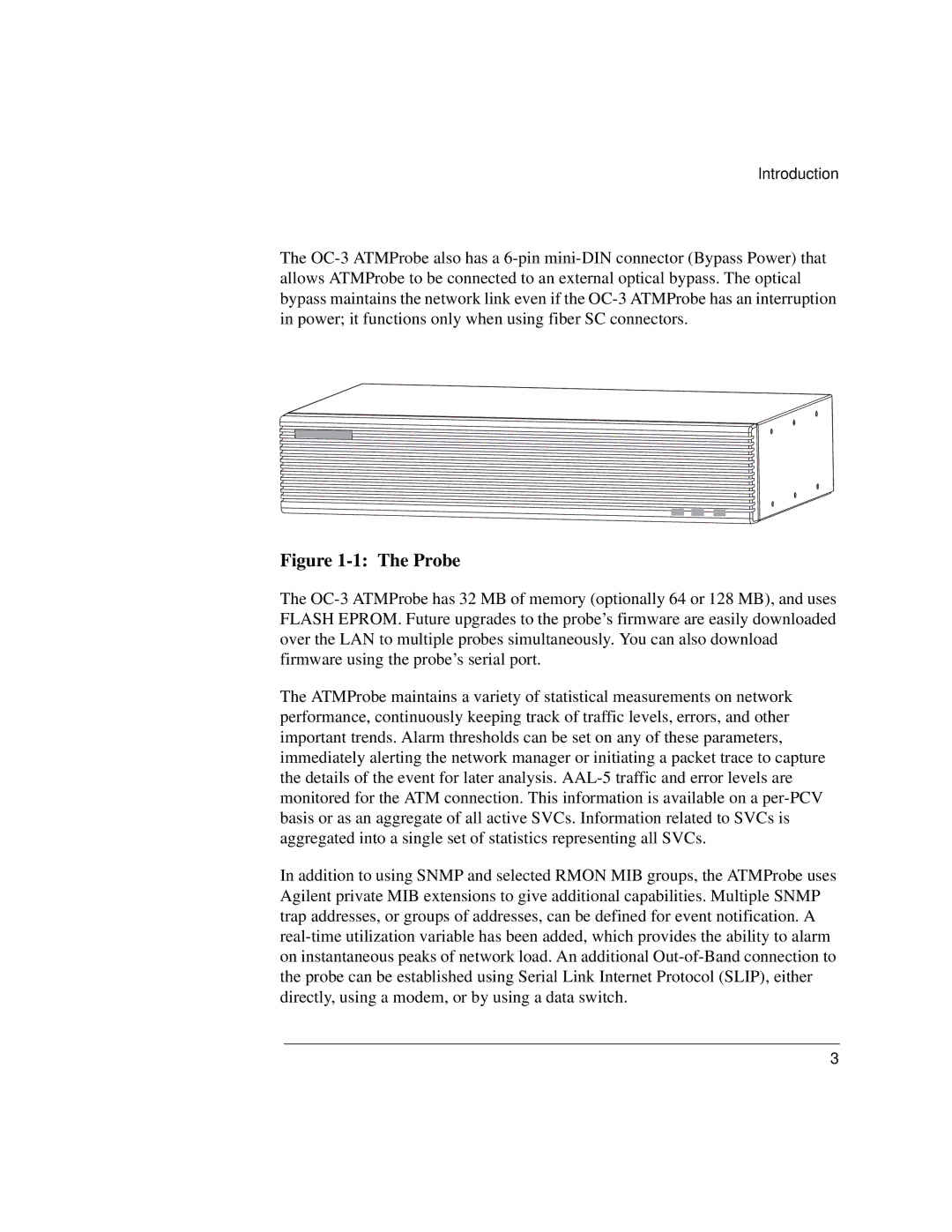
Introduction
The OC-3 ATMProbe also has a 6-pin mini-DIN connector (Bypass Power) that allows ATMProbe to be connected to an external optical bypass. The optical bypass maintains the network link even if the OC-3 ATMProbe has an interruption in power; it functions only when using fiber SC connectors.
Figure 1-1: The Probe
The OC-3 ATMProbe has 32 MB of memory (optionally 64 or 128 MB), and uses FLASH EPROM. Future upgrades to the probe’s firmware are easily downloaded over the LAN to multiple probes simultaneously. You can also download firmware using the probe’s serial port.
The ATMProbe maintains a variety of statistical measurements on network performance, continuously keeping track of traffic levels, errors, and other important trends. Alarm thresholds can be set on any of these parameters, immediately alerting the network manager or initiating a packet trace to capture the details of the event for later analysis. AAL-5 traffic and error levels are monitored for the ATM connection. This information is available on a per-PCV basis or as an aggregate of all active SVCs. Information related to SVCs is aggregated into a single set of statistics representing all SVCs.
In addition to using SNMP and selected RMON MIB groups, the ATMProbe uses Agilent private MIB extensions to give additional capabilities. Multiple SNMP trap addresses, or groups of addresses, can be defined for event notification. A real-time utilization variable has been added, which provides the ability to alarm on instantaneous peaks of network load. An additional Out-of-Band connection to the probe can be established using Serial Link Internet Protocol (SLIP), either directly, using a modem, or by using a data switch.

